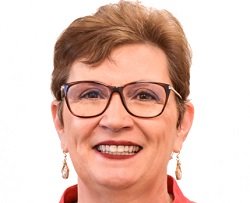What Communicators Can Do to Help Manage Reputation Risk
 Laura Kane, Chief Communications Officer, PRSA
Laura Kane, Chief Communications Officer, PRSA
In a world where consumers can access tons of information about organizations and people, we need to make sure that we have a proactive plan in place to manage our organization’s reputations. Most organizations have a crisis communications plan in place to minimize damage if a crisis occurs. This “let’s be prepared for the unexpected” plan has tangible value, but it’s not enough.
Companies need to take crisis management a step further and manage their reputation by monitoring their social presence and building up goodwill with the publics that they serve. A company that minimizes the impact of social media or the importance of CSR to its bottom line does so at its own peril.
Living in a world of social media also means living in a world of bots where the lines blur between the human element and automatic, preprogrammed responses and opinions. A study from the University of Southern California and Indiana University found that between 9 percent and 15 percent of active Twitter accounts are bots with “built-in retweet and mention strategies that target specific groups.” That makes a company’s reputation increasingly vulnerable not only in how it might be affected but also its options for responding to the situation.
 What makes reputation risk unique is its subjective nature. While one can measure reputation and use analytics to determine the value of an organization’s reputation, it can’t be fully understood by a single division or expert — it requires the understanding and cooperation of an entire operation.
What makes reputation risk unique is its subjective nature. While one can measure reputation and use analytics to determine the value of an organization’s reputation, it can’t be fully understood by a single division or expert — it requires the understanding and cooperation of an entire operation.
That is why companies must develop a systematic approach to looking at the operational risks that exist within their organizations. Reputation risk lives throughout an organization, so every function in every country and market needs to understand it and ensure that they can identify it, evaluate it and if necessary, mitigate it.
What can companies do to get in front of reputation risk? They need to look at the elements across an organization that can negatively impact reputation and integrate those elements into a reporting and crisis management infrastructure.
This low-tech, collaborative, high-touch process requires coordination by a highly skilled communications expert who understands reputation risk. Working with this person, a skilled team of leaders representing HR, product development, operations, compliance, the CFO’s office and others would come to the table regularly to discuss how regulatory changes, customer shifts and economic issues could and are impacting the business.
These efforts would develop new risk oversight and processes critical for the identification and evaluation of operational and functional processes necessary to deal with these emerging issues. Breaking down silos and putting senior leaders from the entire company into a room with the charge to produce something the CEO and board will closely monitor can be uncomfortable. At first, these meetings will seem chaotic as executives find themselves outside their comfort zone. That is where the outside-in expertise of the head of communications will play a strategic role in facilitating these meetings. Over time, these regular discussions will lead to the development of strategies and plans to create processes for identifying and reporting red flags, and a discipline for dealing with issues before they become bigger. The payoff for this hard work will be that functional experts, executives and the board will have a level of knowledge and awareness that will ultimately affect the day-to-day decision-making at the root of all reputation risk.
If you are interested in learning more about this systematic approach to reputation risk – learn more about PRSA’s Reputation Risk Management Certificate Program, https://bit.ly/2reBPBM . This new professional development offering is designed as a live, online series of six modules and will launch on May 16, airing each consecutive Wednesday from 3–4:30 p.m. EDT (May 23, May 30, June 6, June 13 and June 20).

